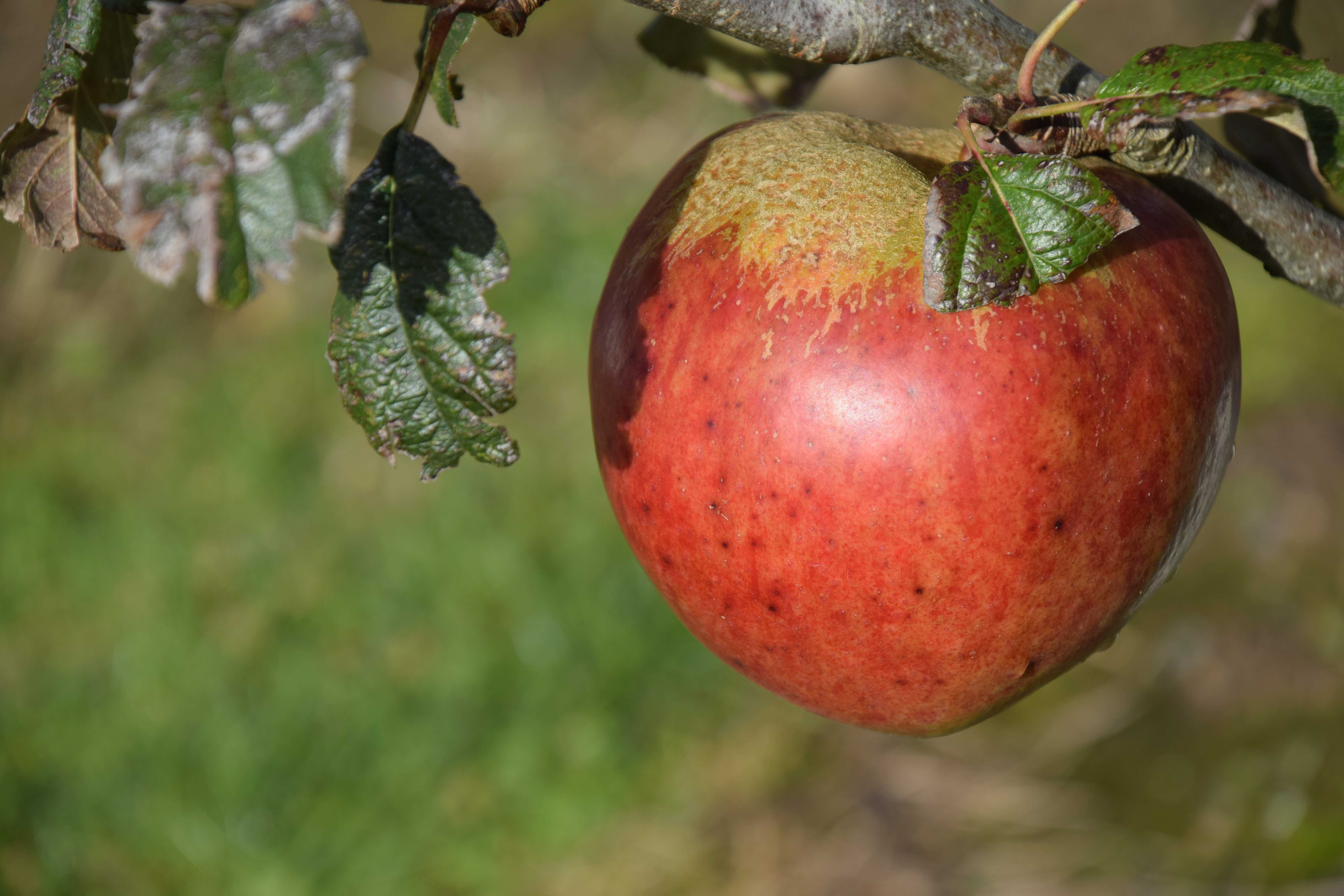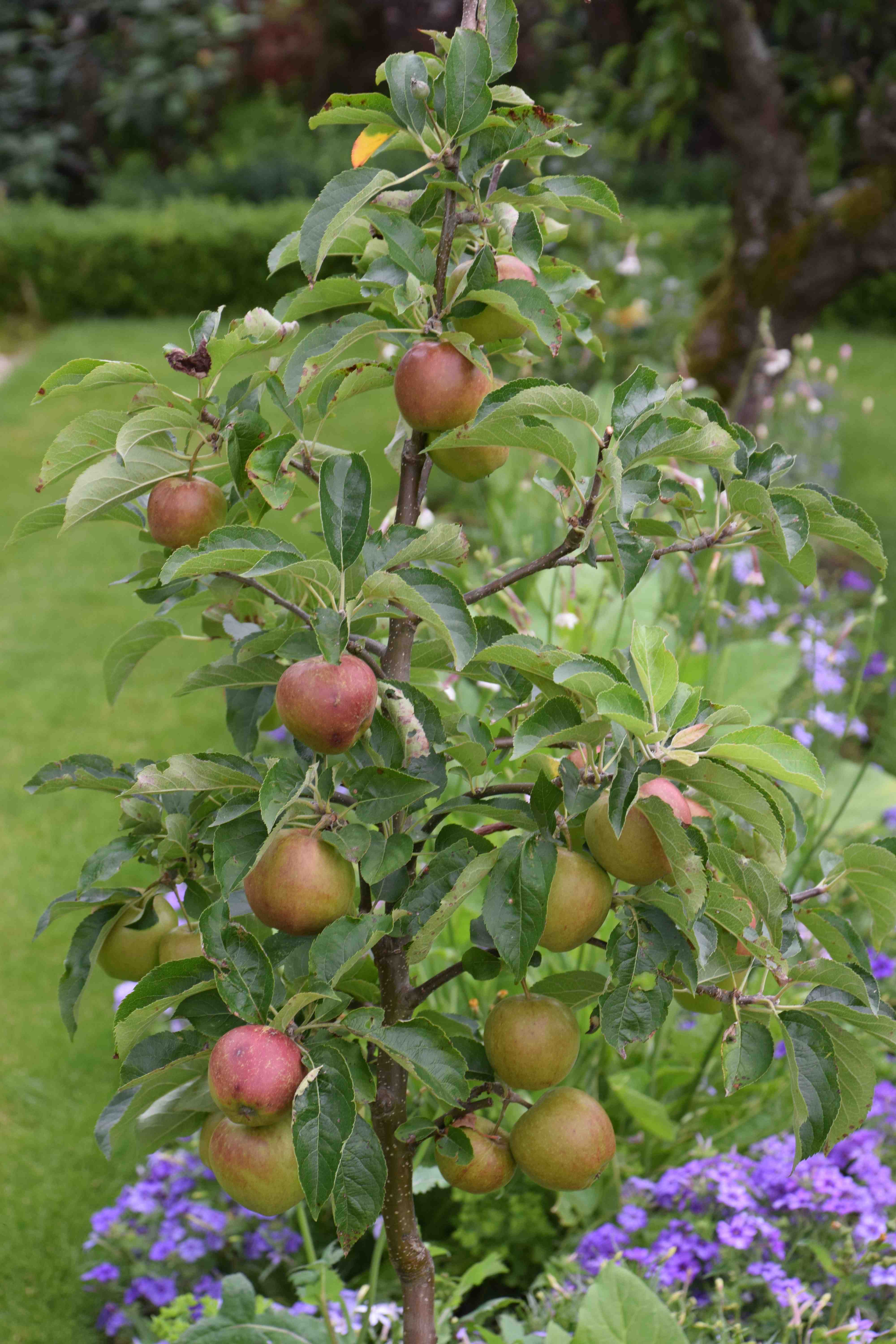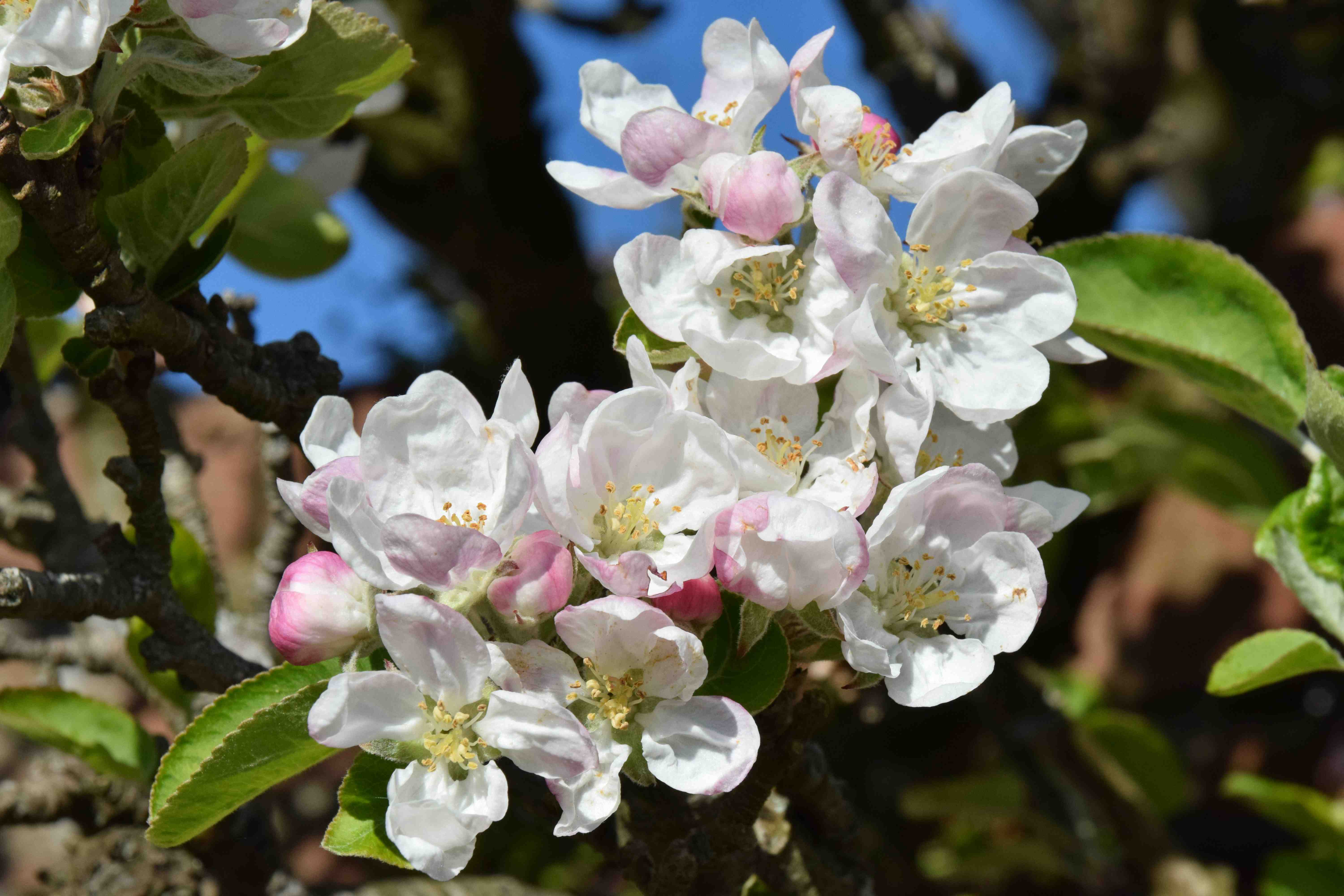
It is the season when we are surrounded by apples and it is a sin to buy imported apples.
Of all the fruits we can grow, apples are the most rewarding and probably the easiest. It is true that strawberries will crop more quickly but the plants need replacement after two years and apples are less troubled by birds – though not immune.
Once planted, an apple tree will crop in a few years and then produce more and more fruit every year. With dwarf rootstocks you can grow an apple tree in the smallest of gardens and even pots.
A few basics:
Most apples are not self-fertile. This means that you need to plant two apples so the pollen from one will fertilise the other. Different varieties are grouped into sections – usually 1-4 and you should plant those in the same or adjacent groups. The groups are based on flowering times.
If you have a fairly small garden and neighbours the chances are that there is an apple tree next door and that will probably act as a pollinator.
Crab apples work well as pollinators.
One apple in particular need two different pollinators – the famous ‘Bramley’. If this is not possible then choose a different cooker such as ‘Grenadier’ or ‘Howgate Wonder’ – after all you can buy ‘Bramley’s anywhere!
Apples are grafted onto different rootstocks and these control the growth rate of the apple. It does not affect the flavour. M27 produces a miniature tree no more than 2m high. It is only suitable for good soils because it is so slow growing. M9 is slightly more vigorous. M26 is the most popular rootstock and and produces a tree 3m (10ft) high. It is suitable for training as a cordon as well as a bush tree. M106 is more vigorous still.
Choose an interesting variety. I would not plant an apple that is readily available in the shops – there are so many more that deserve to be grown. In addition, many of the popular commercial apples are not suited to our climate. Pink Lady (R) (‘Cripp’s Pink) needs more warmth than we can provide, as does ‘Braeburn’. ‘Cox’ is a wonderful apple but not easy to grow either. Many modern apples have ‘Cox’ in their ancestry, including ‘Suntan’. ‘Falstaff’ and ‘Red Falstaff’ are great, easy apples that are perfect for organic gardeners.
I am lucky enough to have room for twenty apple trees and have planted modern and heritage varieties. ‘Jonagold’ is my one foray into common, commercial varieties because I like them so much. Always grow what you like to eat!

You can grow an apple in a pot but will only be healthy for about ten years. Always use John Innes No 3 compost and not multipurpose compost.
Apple trees are not just useful, they are beautiful in flower too.

With careful cultivation, an apples tree will start to crop in two or three years. If planting in grass keep the area around the base clear of turf. This will avoid damaging the trunk with the mower and reduce competition from the grass.
When planting apples, choose a sunny site that is not a frost pocket. Avoid very exposed, windy spots too. Clay soils are suitable and chalky soils are not a problem either.
Autumn is the ideal planting time to look out for apple trees now and prepare the soil now for planting.
Reminders
Plant wallflowers to replace faded summer flowers.
Trim conifer and other hedges
Lift gladioli as they start to die down and leave them to dry so you can remove the young, healthy corms.
Prune out the fruited canes of summer-fruited raspberries and continue to remove the runners from strawberries
Plant onion sets and garlic